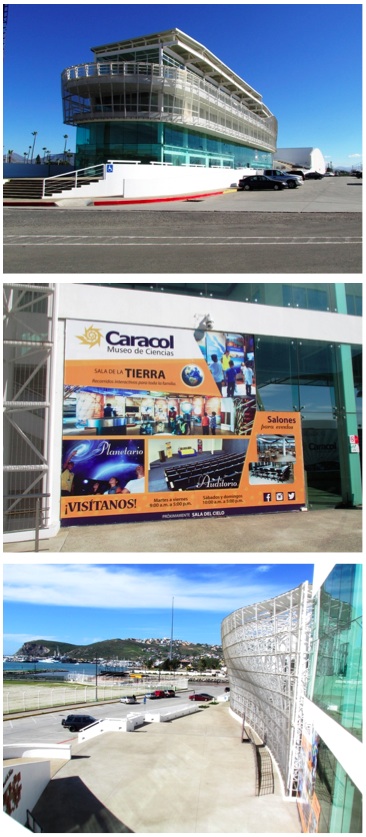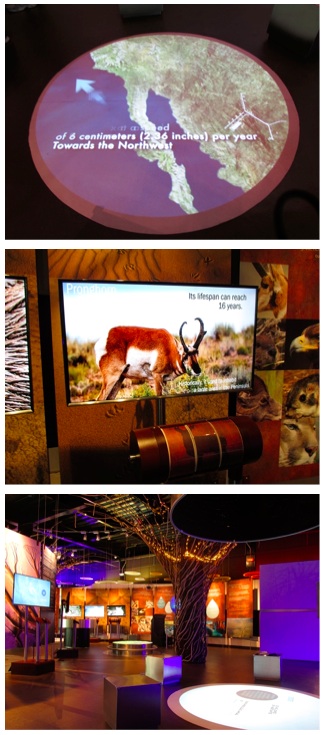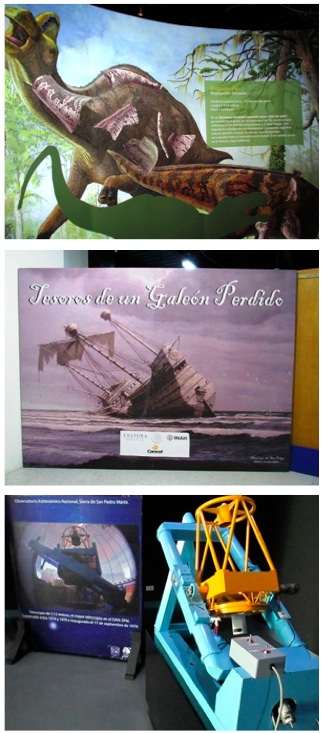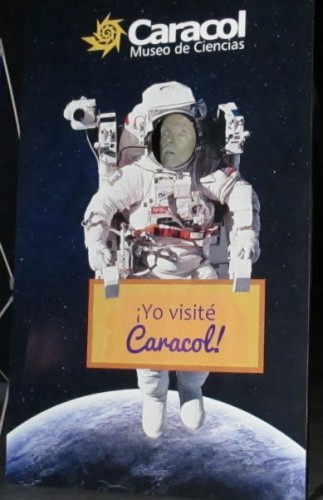 By Graham Mackintosh
By Graham Mackintosh
Ensenada’s impressive new “Caracol – Museo de Ciencias” has been almost ten years in the making. It is prominently situated on Avenida Club Rotario #3, sandwiched between the harbor and the palatial white Riviera Civic, Social, and Cultural Center.
Given its location, the Caracol (Spanish for snail or seashell) Museum is clearly designed to be shipshape and not overawed by the many container ships and cruise ships that regularly provide a backdrop to the west.
It is well worth a visit, as is the Riviera across the highway with its Museum of Ensenada History and fascinating tranquil gardens and grounds. There is plenty of free parking outside the Caracol entrance, on nearby streets and behind the Riviera. There is also a wide choice of hotels within walking distance, including some currently as low as US$15 per night midweek.
Glass is a major component of the Caracol’s construction, which permits interesting views from the warm corridors inside across the harbor and, looking east, to the Riviera and the hotel zone.
The ambitious museum is clean and modern with great attention given to handicapped access and the needs of visiting schoolchildren. The Caracol is a work in progress and has every intention to offer more exhibits, including a gallery on the sea, as funds become available. It focuses on Baja and Ensenada related science and engineering projects. Most displays are accurately captioned in English.
Current exhibition galleries include The Earth, The Heavens, the wreck of a Manila Galleon on the Pacific Coast of Baja, and a temporary exhibit on the receding polar ice caps and the impacts on life in the region and on world sea levels.
The Earth/La Tierra focuses on Baja’s formation, separation, and future movement. We are told the Peninsula is moving northwest at 2.36 inches a year.
 An accompanying caption in English mistranslates the direction of movement: “When the first European explorers arrived in Baja California they thought that it was an island. Strangely their mistaken idea will become a reality. If the continental drift continues to the northeast, in 16 million years the Peninsula will be located in front of San Francisco’s current location.” That typo aside, all other English captions seem clear, helpful and accurate:
An accompanying caption in English mistranslates the direction of movement: “When the first European explorers arrived in Baja California they thought that it was an island. Strangely their mistaken idea will become a reality. If the continental drift continues to the northeast, in 16 million years the Peninsula will be located in front of San Francisco’s current location.” That typo aside, all other English captions seem clear, helpful and accurate:
The good news: any remaining disgruntled Charger fans will be able to go watch the 49ers.
While on the subject of seismic shifts, if you enjoy a good shake you can step inside an Earthquake Simulator. Kids will love it.
Anyone wondering about the great clouds of steam visible to the east in the Colorado delta as you drive south of Mexicali can “Discover how the Cerro Prieto geothermal station works.” Cerro Prieto is the largest by area geothermal power station in the world, and about the third largest by output.
You can also learn about the source and quality of Ensenada’s drinking water, and the use of wind power from Rumorosa, and solar power from Mexicali.
Many will enjoy contemplating the recent dinosaur excavations in the 73-million year old sandstone beds near El Rosario, where skeletons of both the massive duck billed herbivore Magnapaulia and its early Tyrannosaurus predator have been found.
For some reason this is one of the few exhibits not captioned in English, but great graphics and interactive components like a monster dinosaur jigsaw puzzle mean it is a must-see for visiting youngsters. I doubt that anyone who stands before the huge images of these Cretaceous dinosaurs will see the drive up and down the hills north of El Rosario in quite the same way again.
Baja’s wildlife is given prominence, as is the evolutionary processes behind island endemism and environmental adaptation. Backed by maps, films and colorful displays, we are informed: “In the islands of the Gulf of California there are 654 species of plants, 28 of which are endemic; and 117 species and subspecies of reptiles, 40% being endemic.”
 An interactive display brings up film and information about Baja’s California condors as well as pronghorn antelope, bighorn sheep, mountain lions, and other mammals.
An interactive display brings up film and information about Baja’s California condors as well as pronghorn antelope, bighorn sheep, mountain lions, and other mammals.
Moving on to the Space and Planet gallery you learn the difference between comets, meteors, and asteroids.
There is a discussion about the 3×5 km cumbersomely-named comet 67p/Churyumov-Gerasimenko, which whizzes through the solar system every 6.5 years. A model shows how it would look landing in Ensenada bay… clearly not good for anyone in Ensenada or indeed the entire Pacific basin.
Considerable space is dedicated to the work of Mexico’s National Observatory in the Sierra San Pedro Martir, and you can operate a model of its large 2.1 meter telescope to explore the mechanism of its axes of movement.
The shipwreck exhibit presents Chinese porcelain and other finds from the recently discovered Manila Galleon, San Felipe, which disappeared in 1576. It was one of the earliest ships pioneering that hazardous and spectacularly profitable transpacific trade route. Through the use of conventional metal detectors, magnetometers, and ground-penetrating radar, tantalizing items have been unearthed from the sand at an undisclosed remote Pacific Baja beach. Photo displays and film of the excavation and interviews in English with some of those involved help you share in the excitement of the discovery.
There is an auditorium with a program of free evening films and lectures and many rooms for rent. Restrooms are plentiful, and modern and clean. I didn’t see more than a few people visiting, but that could change when a cruise ship pulls in. The museum is definitely a worthwhile place to visit and bring the kids and will be an important community resource.
Park, contemplate, spend some time, explore around. Enjoy.
Mexican telephone # (646) 177 0897
Caracol Opening Hours:
Tuesday-Friday 9-5
Sat-Sun 10-5
Monday closed
General Admission 60 pesos
Students/seniors/handicapped 40 pesos
Children 6-12 30 pesos
Under 5 free
Graham Mackintosh is a Baja author and adventurer. He has written four books on Baja: “Into A Desert Place,” which recounts the tale of his two-year, 3,000-mile hike around the coastline of the Baja California peninsula; “Journey with a Baja Burro,” his tale of hiking the rugged mountainous interior of Baja; “Nearer My Dog to Thee,” where he spends four months with his dogs in the Sierra de San Pedro Mártir; and “Marooned with Very Little Beer,” recounting his two months kayaking and hiking Isla Angel de la Guarda, the second-largest island in the Sea of Cortez.
Read more of Graham’s articles.

